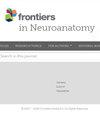Development and characterization of a non-human primate model of disseminated synucleinopathy
IF 2.3
4区 医学
Q1 ANATOMY & MORPHOLOGY
引用次数: 0
Abstract
IntroductionThe presence of a widespread cortical synucleinopathy is the main neuropathological hallmark underlying clinical entities such as Parkinson’s disease with dementia (PDD) and dementia with Lewy bodies (DLB). There currently is a pressing need for the development of non-human primate (NHPs) models of PDD and DLB to further overcome existing limitations in drug discovery.MethodsHere we took advantage of a retrogradely-spreading adeno-associated viral vector serotype 9 coding for the alpha-synuclein A53T mutated gene (AAV9-SynA53T) to induce a widespread synucleinopathy of cortical and subcortical territories innervating the putamen. Four weeks post-AAV deliveries animals were sacrificed and a comprehensive biodistribution study was conducted, comprising the quantification of neurons expressing alpha-synuclein, rostrocaudal distribution and their specific location.ResultsIntraputaminal deliveries of AAV9-SynA53T lead to a disseminated synucleinopathy throughout ipsi- and contralateral cerebral cortices, together with transduced neurons located in the ipsilateral caudal intralaminar nuclei and in the substantia nigra pars compacta (leading to thalamostriatal and nigrostriatal projections, respectively). Cortical afferent systems were found to be the main contributors to putaminal afferents (superior frontal and precentral gyri in particular).DiscussionObtained data extends current models of synucleinopathies in NHPs, providing a reproducible platform enabling the adequate implementation of end-stage preclinical screening of new drugs targeting alpha-synuclein.非人灵长类动物散播性突触核蛋白病模型的开发和特征描述
导言广泛存在的皮质突触核蛋白病是帕金森病伴痴呆(PDD)和路易体痴呆(DLB)等临床实体的主要神经病理学特征。我们利用逆向传播的编码α-突触核蛋白A53T突变基因的9号血清型腺相关病毒载体(AAV9-SynA53T)诱导支配普鲁士门的皮层和皮层下区域发生广泛的突触核蛋白病。AAV投放后四周,动物被处死,并进行了全面的生物分布研究,包括α-突触核蛋白表达神经元的数量、喙尾分布及其具体位置。结果椎管内注射 AAV9-SynA53T 会导致同侧和对侧大脑皮层出现散发性突触核蛋白病,同时同侧尾椎内核和黑质(分别导致丘脑突触和黑质突触投射)也会出现转染神经元。讨论获得的数据扩展了目前的NHPs突触核蛋白病模型,提供了一个可重复的平台,使针对α-突触核蛋白的新药的临床前筛选能够充分进行到最后阶段。
本文章由计算机程序翻译,如有差异,请以英文原文为准。
求助全文
约1分钟内获得全文
求助全文
来源期刊

Frontiers in Neuroanatomy
ANATOMY & MORPHOLOGY-NEUROSCIENCES
CiteScore
4.70
自引率
3.40%
发文量
122
审稿时长
>12 weeks
期刊介绍:
Frontiers in Neuroanatomy publishes rigorously peer-reviewed research revealing important aspects of the anatomical organization of all nervous systems across all species. Specialty Chief Editor Javier DeFelipe at the Cajal Institute (CSIC) is supported by an outstanding Editorial Board of international experts. This multidisciplinary open-access journal is at the forefront of disseminating and communicating scientific knowledge and impactful discoveries to researchers, academics, clinicians and the public worldwide.
 求助内容:
求助内容: 应助结果提醒方式:
应助结果提醒方式:


